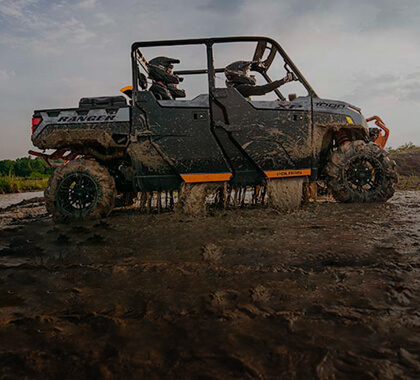What to Look Out for When Buying Polaris Ranger Receivers?
Single DIN Receivers vs Double DIN Receivers
At the very bottom end of the scale, stands the single DIN Polaris Ranger receiver which is the most basic and most rudimentary system out there, only designed for a single basic screen with very limited media playback capabilities.
They are also smaller in size, cost a lot less money, and are often enough for those who aren’t serious tech heads and just want a system that works and is simple to use.
A double DIN Polaris Ranger receiver is much larger in size and is more expensive compared to a single DIN unit.
There often feature larger touchscreen displays for entertainment, music playback, and navigation.
These can also often come with stuff such as BT, hands-free calling, and smartphone integration.
Sound Quality
As most Polaris Ranger owners use these receivers in an off-road environment, it’s important to go for a system that is able to play a clear and crisp sound that can easily be heard over background noise.
A simple way to check a receiver's sound quality is to look at its wattage rating, which is a measure of its sound power output.
Generally, a higher wattage rating means the receiver can produce louder, clearer, punchier sounds.
Be that as it may, it's also important to consider the quality of the speakers and other audio components that will be connected to the receiver as these will always be the most important aspect of sound quality.
Features and Functionality
Usually, the more advanced the unit, the more special features it comes with.
So, higher-end Polaris Ranger receiver units come with stuff such as Bluetooth connectivity, hands-free comms, music dimming while talking, weather reports, and GPS.
While video playback, music app streaming, phone app integration, and a whole load of other useful features that are going to make your experience easier and more enjoyable are only offered for top-spec models.
Durability and Toughness
Polaris Ranger receivers aren’t cheap which is why you should do your best to keep them in a satisfactory condition for them to last as long as possible.
This means going for units that are made out of durable materials such as aluminum and also come with rubberized corners or reinforced frames that can take a beating if necessary.
Off-road environments can also expose your receiver to rain, mud, dust, and other extreme weather elements, so it's important to choose a receiver that is weather-resistant and dust-resistant.





